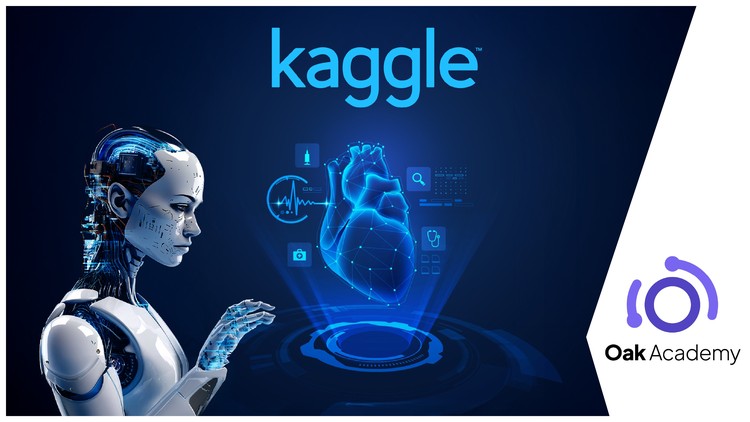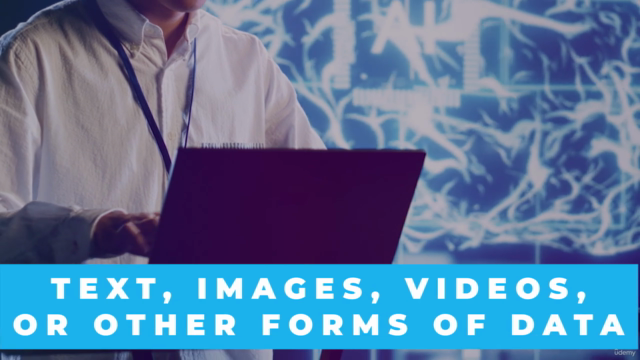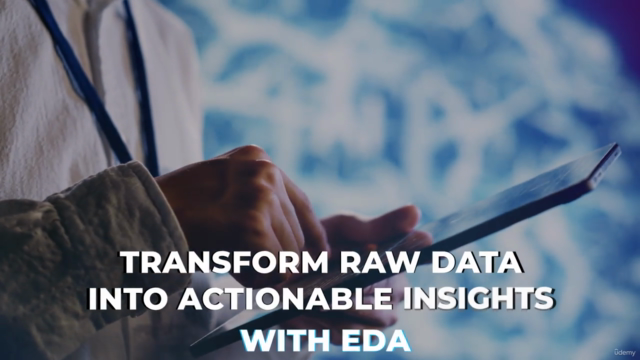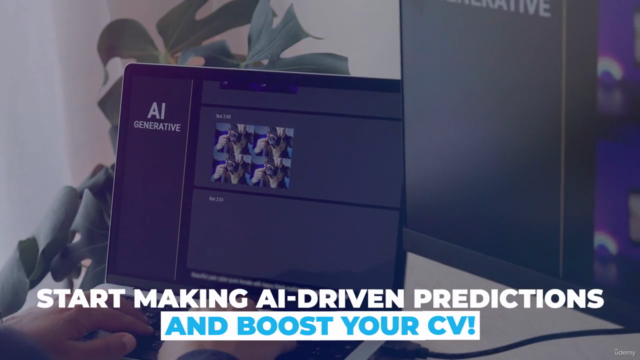Generative AI with Heart Attack Prediction Kaggle Project
Master in Data Science and Use Gen AI tools to predict heart attacks using Kaggle datasets and ChatGPT-4o's super power
5.00 (9 reviews)

179
students
32 hours
content
Jul 2025
last update
$19.99
regular price
What you will learn
Kaggle, a subsidiary of Google LLC, is an online community of data scientists and machine learning practitioners.
Kaggle is a platform where data scientists can compete in machine learning challenges. These challenges can be anything from predicting housing prices to detect
Machine learning describes systems that make predictions using a model trained on real-world data.
Machine learning isn’t just useful for predictive texting or smartphone voice recognition. Machine learning is constantly being applied to new industries and ne
Data science includes preparing, analyzing, and processing data. It draws from many scientific fields, and as a science, it progresses by creating new algorithm
Data science application is an in-demand skill in many industries worldwide — including finance, transportation, education, manufacturing, human resources
Data science uses algorithms to understand raw data. The main difference between data science and traditional data analysis is its focus on prediction.
Data Scientists use machine learning to discover hidden patterns in large amounts of raw data to shed light on real problems.
What is Kaggle?
Registering on Kaggle and Member Login Procedures
Getting to Know the Kaggle Homepage
Competitions on Kaggle
Datasets on Kaggle
Examining the Code Section in Kaggle
What is Discussion on Kaggle?
Courses in Kaggle
Ranking Among Users on Kaggle
Blog and Documentation Sections
User Page Review on Kaggle
Treasure in The Kaggle
Publishing Notebooks on Kaggle
What Should Be Done to Achieve Success in Kaggle?
First Step to the Project
Notebook Design to be Used in the Project
Examining the Project Topic
Recognizing Variables in Dataset
Required Python Libraries
Loading the Dataset
Initial analysis on the dataset
Examining Missing Values
Examining Unique Values
Separating variables (Numeric or Categorical)
Examining Statistics of Variables
Numeric Variables (Analysis with Distplot)
Categoric Variables (Analysis with Pie Chart)
Examining the Missing Data According to the Analysis Result
Numeric Variables – Target Variable (Analysis with FacetGrid)
Categoric Variables – Target Variable (Analysis with Count Plot)
Examining Numeric Variables Among Themselves (Analysis with Pair Plot)
Feature Scaling with the Robust Scaler Method for New Visualization
Creating a New DataFrame with the Melt() Function
Numerical - Categorical Variables (Analysis with Swarm Plot)
Numerical - Categorical Variables (Analysis with Box Plot)
Relationships between variables (Analysis with Heatmap)
Dropping Columns with Low Correlation
Visualizing Outliers
Dealing with Outliers
Determining Distributions of Numeric Variables
Transformation Operations on Unsymmetrical Data
Applying One Hot Encoding Method to Categorical Variables
Feature Scaling with the Robust Scaler Method for Machine Learning Algorithms
Separating Data into Test and Training Set
Logistic Regression
Cross Validation for Logistic Regression Algorithm
Roc Curve and Area Under Curve (AUC) for Logistic Regression Algorithm
Hyperparameter Optimization (with GridSearchCV) for Logistic Regression Algorithm
Decision Tree Algorithm
Support Vector Machine Algorithm
Random Forest Algorithm
Hyperparameter Optimization (with GridSearchCV) for Random Forest Algorithm
Project Conclusion and Sharing
Data analysis is the process of studying or manipulating a dataset to gain some sort of insight
Big News: Introducing ChatGPT-4o
How to Use ChatGPT-4o?
Chronological Development of ChatGPT
What Are the Capabilities of ChatGPT-4o?
As an App: ChatGPT
Voice Communication with ChatGPT-4o
Instant Translation in 50+ Languages
Interview Preparation with ChatGPT-4o
Visual Commentary with ChatGPT-4o
ChatGPT for Generative AI Introduction
Accessing the Dataset
First Task: Field Knowledge
Continuing with Field Knowledge
Delving into the Details of Variables
Exploratory Data Analysis (EDA)
Categorical Variables (Analysis with Pie Chart)
Importance of Bivariate Analysis in Data Science
Numerical Variables vs Target Variable
Correlation Between Numerical and Categorical Variables and the Target Variable
Numerical Variables - Categorical Variables
Numerical Variables - Categorical Variables with Swarm Plot
Relationships between variables (Analysis with Heatmap)
Preparation for Modeling
Dropping Columns with Low Correlation
Struggling Outliers
Visualizing Outliers
Dealing with Outliers
Determining Distributions
Determining Distributions of Numeric Variables
Applying One Hot Encoding Method to Categorical Variables
Feature Scaling with the RobustScaler Method for Machine Learning Algorithms
Feature Scaling with the RobustScaler Method for Machine Learning Algorithms
Logistic Regression Algorithm
Cross Validation
ROC Curve and Area Under Curve (AUC)
ROC Curve and Area Under Curve (AUC)
Hyperparameter Tuning for Logistic Regression Model
Decision Tree Algorithm
Support Vector Machine Algorithm
Random Forest Algorithm
Generative AI is artificial intelligence (AI) that can create original content in response to a user's prompt or request
Course Gallery




Loading charts...
6271617
udemy ID
05/11/2024
course created date
28/04/2025
course indexed date
Bot
course submited by